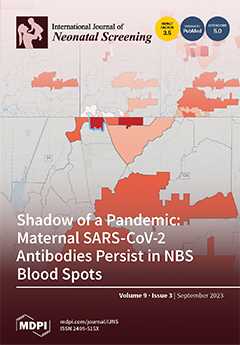Dried blood spot (DBS) cards from newborn screening (NBS) programs represent a wealth of biological data. They can be stored easily for a long time, have the potential to support medical and public health research, and have secondary usages such as quality assurance and forensics, making it the ideal candidate for bio-banking. However, worldwide policies vary with regard to the duration of storage of DBS cards and how it can be used. Recent advances in genomics have also made it possible to perform extended genetic testing on DBS cards in the newborn period to diagnose both actionable and non-actionable childhood and adult diseases. Both storage and secondary uses of DBS cards raise many ethical, clinical, and social questions. The openness of the key stakeholders, namely, parents and healthcare providers (HCPs), to store the DBS cards, and for what duration and purposes, and to extended genetic testing is largely dependent on local cultural–social-specific factors. The study objective is to assess the parents’ and HCPs’ awareness and receptivity toward DBS retention, its secondary usage, and extended genetic testing. A cross-sectional, self-administrated survey was adopted at three hospitals, out of which two were public hospitals with maternity services, between June and December 2022. In total, 452 parents and 107 HCPs completed and returned the survey. Overall, both HCPs and parents were largely knowledgeable about the potential benefits of DBS card storage for a prolonged period and its secondary uses, and they supported extended genetic testing. Knowledge gaps were found in respondents with a lower education level who did not know that a DBS card could be stored for an extended period (
p < 0.001), could support scientific research (
p = 0.033), and could aid public health research, and future policy implementation (
p = 0.030). Main concerns with regard to DBS card storage related to potential privacy breaches and anonymity (Parents 70%, HCPs 60%). More parents, compared to HCPs, believed that storing DBS cards for secondary research does not lead to a reciprocal benefit to the child (
p < 0.005). Regarding extended genetic testing, both groups were receptive and wanted to know about actionable childhood- and adult-onset diseases. More parents (four-fifths) rather than HCPs (three-fifths) were interested in learning about a variant with unknown significance (
p < 0.001). Our findings report positive support from both parents and HCPs toward the extended retention of DBS cards for secondary usage and for extended genetic testing. However, more efforts to raise awareness need to be undertaken in addition to addressing the ethical concerns of both parents and HCPs to pave the way forward toward policy-making for DBS bio-banking and extended genetic testing in Hong Kong.
Full article






